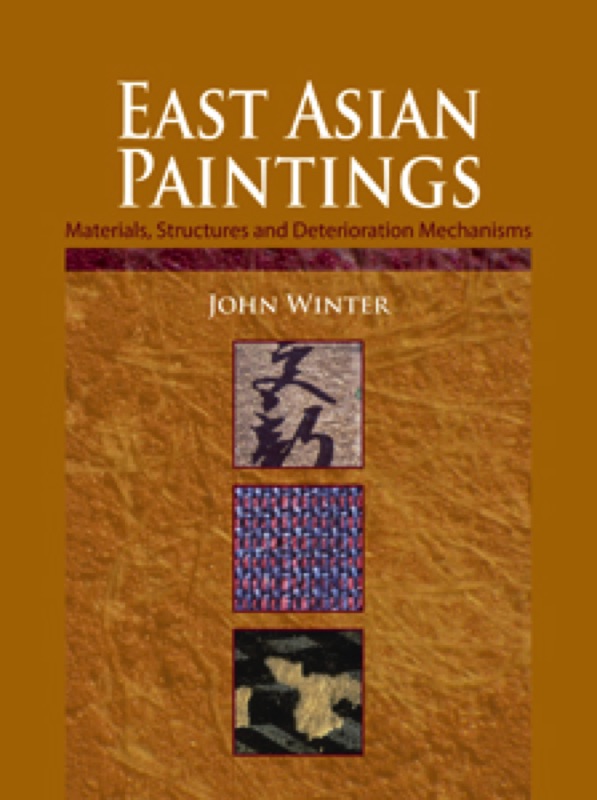This book brings together what is known of the material aspects of the paintings of East Asia (China, Japan and Korea), covering the components used, painting structures, certain aspects of painting techniques, and the mechanisms of deterioration. It concentrates on those works in the mainstream of art history, largely paintings on flexible supports and typically mounted as scrolls. The author bases his account on what is known from the available historical literature, on research published by colleagues worldwide, and on his own research of over thirty-five years at the Freer Gallery of Art and the Arthur M. Sackler Gallery.
Foreword
Preface
Acknowledgements
Orienting survey
Scope
Sources of information
East Asian chronology
China
Korea
Japan
The development of painting
China
Korea
Japan
Pigments
Introduction
Individual colorants
Cinnabar and vermilion
Iron oxide-based pigments
Iron oxide reds and browns
Organic red colorants
Organic brown
Red lead
Litharge
Iron oxide yellow
Orpiment and realgar
Gamboge
Malachite
Other copper-based green pigments
Green earth
Azurite
Indigo
Ultramarine blue
Smalt
Prussian blue
Han blue and Han purple
Purple and violet pigments
Lead-based white pigments
Calcium carbonate pigments
White earth pigments
Special white pigments
Modern whites
Black metallic compounds
Gold
Silver
Newer pigments
Miscellaneous organic colorants
Chinese ink
Introduction
Carbon as a pigment
Glue
Secondary constituents
Solid ink
Technical studies on ink
The color of ink
Other inks
Supports
Introduction
Silk
Definitions and background
History of production
Structure
Properties
Laboratory studies
Paper
Definitions and background
History of papermaking in China
History of papermaking in Korea and Japan
Manufacturing methods
Plant mucilages in papermaking
The constituents of paper
Properties
Laboratory studies
Other supports
Fabrics other than silk
Mural paintings
Miscellaneous supports
Preparation of Supports
Sizing
Compaction techniques
Fillers and grounds
Coloring of supports
Binders and adhesives
Introduction
Animal glue
Other binders
Starch paste
Minor adhesives
Seaweed adhesive
Bletia gum
Konjak gum
Materials and techniques
Introduction
Optics of painting materials
Observed phenomena
Physical processes
Preparation and grading of pigments
Preparation of mineral pigments
Color variations
Grading of pigments
Techniques for precious metals
Introduction
Gold
Silver
Some special techniques
Back-painting on silk
Tarashikomi and related methods
Studies on the painting as a whole
Radiographic approaches
X-ray emissiography
Infrared imaging techniques
Image processing
Scientific dating of paintings
Microstructure of paintings
Introduction
The paint component
Introduction
Particle packing
The paint binder
Supports
Silk
Paper
Relationship of paint to support
Introduction
Paintings on silk
Paintings on paper
Macrostructure of paintings
Introduction
Individual components
Introduction
Silk laminae
Paper laminae
Hanging scrolls
Structure
Mechanics
Handscrolls
Panels
Structure
Mechanics
Screens
Panels and hanging scrolls
Other formats
Molecular deterioration
Introduction
Physical and chemical changes
Chemical reaction mechanisms
Colorants
Inorganic pigments
Metallic pigments
Organic colorants
Support materials
Silk supports
Paper supports
Binders and adhesives
Animal glue
Starch paste
Attack by insects
Worm damage
Silverfish
Cockroaches
Termites
Other insects
Mechanical deterioration
Introduction
Distortions and creases
Scrolls
Panels
Fracture mechanics
The paint component
Silk
Paper
Breakdown in paintings
Influence of microstructure
Laminar paint components
Silk-paint composites
Paper-paint composites
Fracture in the whole painting
Environmental factors
Epilogue
Some questions
Shape and extent of the field
History of the field
The scientific method
Concepts and theories
Contributions to the field
References
Index
Reviews
East Asian Paintings packs almost all one would need to know on its subject matter into a dense but relatively small number of pages...It is to date the definitive text on technical issues on East Asian paintings...
Studies in Conservation 54(3) (2009) 185-187
